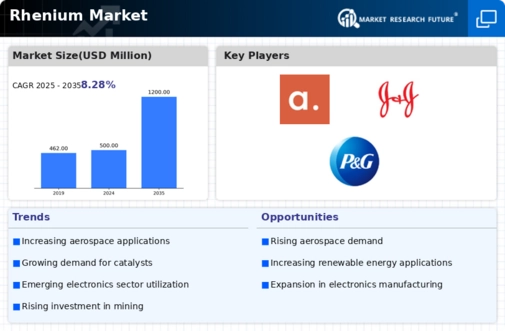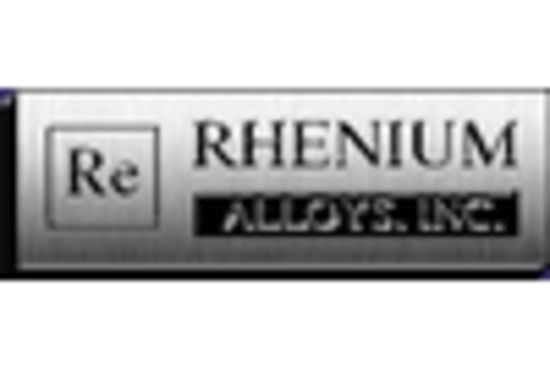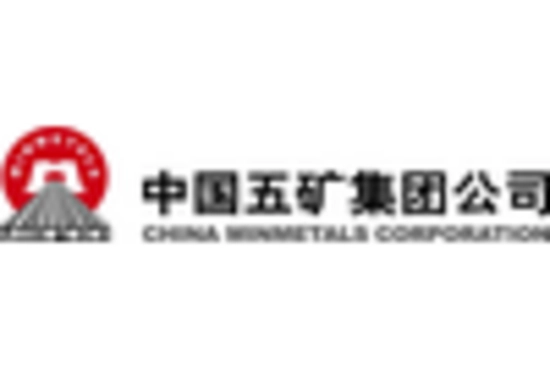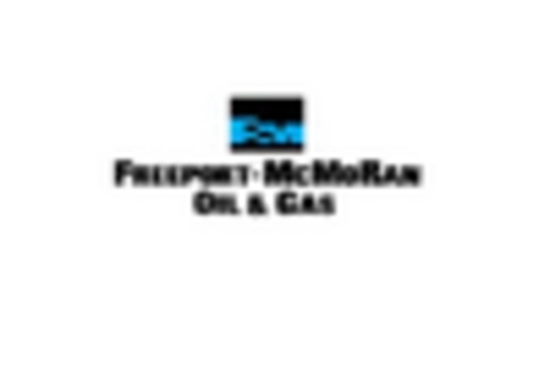Rising Demand in Oil and Gas Sector
The Rhenium Market is significantly influenced by the rising demand in the oil and gas sector. Rhenium Market is a critical component in the production of high-performance catalysts used in petroleum refining and natural gas processing. As global energy consumption continues to rise, the need for efficient refining processes becomes paramount. Rhenium Market-based catalysts enhance the yield of high-octane fuels, which is essential for meeting stringent environmental regulations. Recent market data suggests that the oil and gas industry is expected to witness a steady growth rate, with investments in refining technologies increasing. This trend is likely to create a robust demand for rhenium, as companies seek to optimize their operations and reduce emissions, thereby solidifying rhenium's role in the energy sector.
Emerging Applications in Renewable Energy
The Rhenium Market is witnessing a shift towards emerging applications in renewable energy technologies. Rhenium Market is being explored for its potential use in solar energy systems, particularly in high-efficiency photovoltaic cells and concentrated solar power systems. As the world increasingly focuses on sustainable energy solutions, the demand for materials that enhance energy conversion efficiency is likely to grow. Market data suggests that the renewable energy sector is expanding rapidly, with investments in solar technologies expected to increase significantly. This trend may lead to a greater incorporation of rhenium in energy systems, as its unique properties can improve the performance and longevity of renewable energy solutions, thereby positioning rhenium as a key player in the transition to sustainable energy.
Technological Advancements in Electronics
The Rhenium Market is experiencing a notable surge in demand due to technological advancements in electronics. Rhenium Market is increasingly utilized in high-performance electronic components, such as semiconductors and integrated circuits, which are essential for modern computing and communication devices. The growing trend towards miniaturization and enhanced performance in electronic products is likely to drive the consumption of rhenium. As industries strive for higher efficiency and lower energy consumption, the unique properties of rhenium, including its high melting point and excellent thermal stability, make it an attractive choice. Market data indicates that the electronics sector is projected to grow at a compound annual growth rate of approximately 5% over the next few years, further bolstering the demand for rhenium in this sector.
Growth in Defense and Military Applications
The Rhenium Market is poised for growth due to the increasing investments in defense and military applications. Rhenium Market is utilized in various high-temperature superalloys and components for aerospace and defense systems, including jet engines and missile systems. The ongoing geopolitical tensions and the need for advanced military capabilities are driving nations to enhance their defense technologies. Market data indicates that defense spending is projected to rise, with many countries prioritizing the development of advanced weaponry and aerospace systems. This trend is likely to result in a heightened demand for rhenium, as its unique properties contribute to the performance and reliability of critical defense applications, thereby reinforcing its importance in the military sector.
Increased Focus on Research and Development
The Rhenium Market is benefiting from an increased focus on research and development across various sectors. As industries seek to innovate and improve their products, the demand for rhenium in experimental and advanced applications is likely to rise. Rhenium Market's unique properties make it a subject of interest in various research initiatives, including materials science and nanotechnology. Recent market data indicates that R&D spending is on the rise, with many companies investing in new technologies that require advanced materials. This trend may lead to the discovery of new applications for rhenium, further expanding its market potential. As research continues to unveil the capabilities of rhenium, its role in cutting-edge technologies is expected to grow, thereby enhancing its significance in the market.


















Leave a Comment